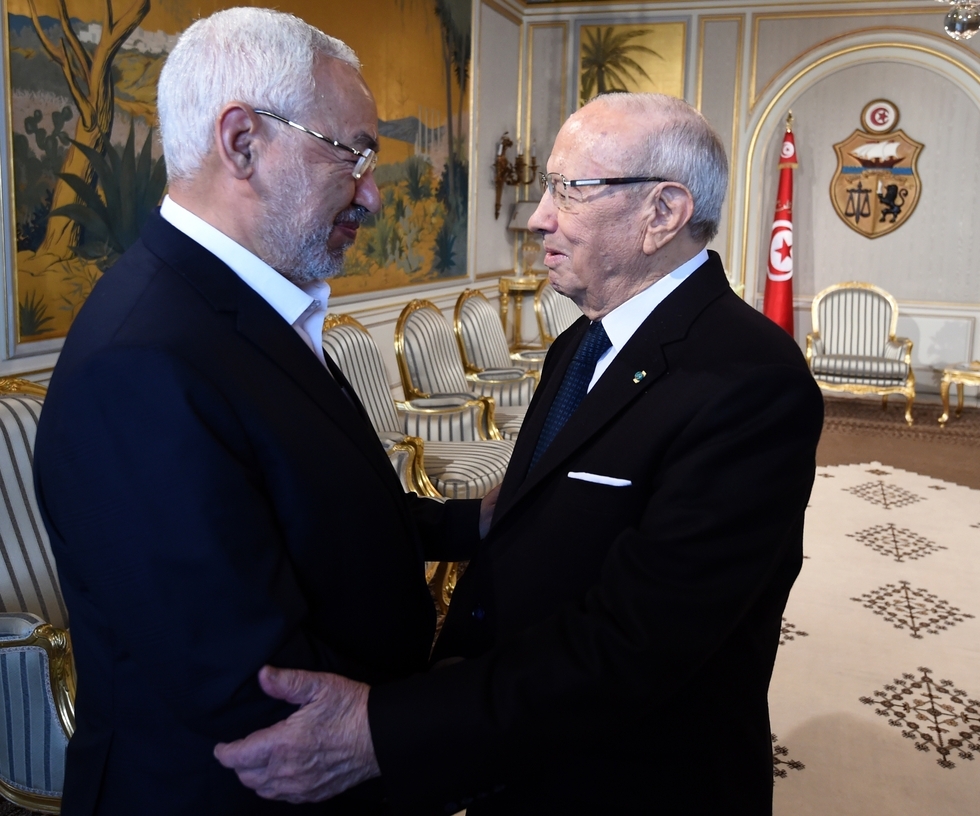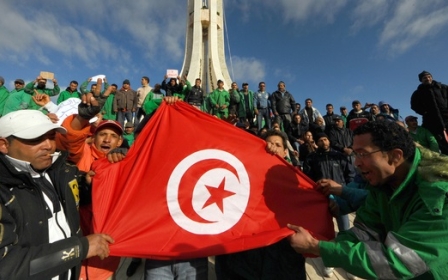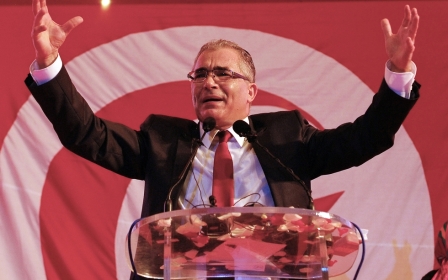Tunisia's relative success story five years on since the Arab Spring

As the flames ignited from the dusty town of Sidi Bouzid in central Tunisia spread from one Arab country to another, it seemed as if Arabs had finally emerged out of the long dark tunnel where they had been forced to dwell for decades.
But instead of the bright dawn of emancipation, progress and self-determination they fervently longed for, what awaited them was an inferno of chaos, civil war and a more brutal form of military dictatorship. Five years after its sudden eruption, what is left of what came to be known as the “Arab spring” today?
In Egypt, the military men have tightened their hold on power after toppling the country’s first democratically elected president. Next door in Libya, the 17 February revolution degenerated into armed conflict between countless warring factions and two rival governments in Tripoli and Tobruk, amidst a total collapse of state structures.
Syria is reeling under a destructive civil war fuelled by a pernicious mix of foreign interventions and ethnic and sectarian schisms, while Yemen is caught in a bloody struggle between Houthis allied with Ali Abdallah Saleh and the Hadi government backed by the “Arab alliance” spearheaded by Saudi Arabia.
The only glimmer of light in this raging sea of civil strife, disorder and resurgent tyranny seems to come from Tunisia, cradle of the Arab revolts. Tunisians have managed to draft a constitution widely regarded as the most progressive in the region. They succeeded in holding open and free parliamentary and presidential elections in 2014 and of forming a coalition government between four parties, headed by the two winners Nidaa Tounes and Ennahdha.
Yet, these relative accomplishments cannot shield Tunisia entirely from the negative effects of its environment, particularly the political crisis unfolding at its borders with Libya. They also come at a price: a chance for the old guards to reposition themselves within the new system under the banner of Nidaa Tounes, a heterogeneous amalgam of various political groups, including many Ben Ali men and RCD officials.
These political concessions, though unpopular among certain revolutionary circles, have enabled Tunisia to withstand the challenges of its political geography. But it remains in a vulnerable state, struggling with a fragile economy, sharply contrasting with a high threshold of popular expectations raised by the revolution, and beset with increasing terrorist threats fuelled by its internal difficulties and the instability of its geopolitical environment.
Tunisia was able to find its way amidst the havoc of the Arab spring largely thanks to its cohesive society. With no sectarian, ethnic, religious or tribal divides, political and ideological differences do not turn into societal divisions there, as they do in Iraq, Syria or Lebanon. The country has no tradition of military intrusions into politics. Habib Bourguiba, Tunisia’s post-independence president, was highly suspicious of the army and anxious to prevent a repetition of the coups staged by Gamal Abdel Nasser in Egypt and the Ba’ath party in Syria and Iraq.
Kept to its barracks, the Tunisian army’s role was, therefore, confined to protecting the country’s rather quiet borders, as far away from politics as possible. Bourguiba’s authoritarian rule rested on a mixture of national liberation legitimacy, personal charisma, and doses of police repression. The last of these was to deepen with Ben Ali’s rule, which turned Tunisia into a virtual police state.
Government in Tunisia was thus left to the politicians, free from the overbearing presence of military men. Without their omnipresent shadow, politics has been able to evolve spontaneously amid the post-revolution uncertainty. And with a strong civil society interwoven with its modern history and national liberation movement, the country’s rival political forces were able to overcome their differences and safeguard its nascent democracy.
Perhaps the decisive factor in the survival of the Tunisian democratic experiment has been the pragmatic rationality of its political actors and their willingness to make concessions and reach deals, instead of pushing the state of political polarisation to its limits. When the country slid into a dangerous crisis following the assassination of two prominent politicians, the ruling Ennahdha party took a very difficult decision, unprecedented in Arab political history: to relinquish power even though it possessed indisputable electoral legitimacy.
The principal conditions it set for this bargain to come into effect were the completion of the constitution drafting process suspended when the opposition laid siege to the constituent assembly on 26 July 2013 and appointment of an independent electoral committee to oversee the legislative and presidential elections that may finally bring the tumultuous transitional phase to a close. The catalyst for this process was the historic Paris meeting that brought the leader of the ruling Ennahdha party with his archenemy at the time, Beji Caid Essebsi, who headed the opposition convened under the umbrella of what was known as the Salvation Front on 15 August 2013. The outcome was a roadmap for the resolution of the political standoff that had crippled the country for months.
Tunisia’s Islamic democrats led by Ennahdha realised that laying the foundations of a democracy in a complex transitional phase requires renunciation of the logic of majority vs minority and widening the power base as far as possible through the art of political compromise. This enabled Tunisians to escape the tragic fate of civil war in neighbouring Libya and authoritarianism in Egypt further down the map. Thanks to this consensus building strategy they managed to defy the dictates of the hostile surrounding geography.
One of the consequences of this process was opening up a space for old regime members to return to the political arena after Ennahdha agreed to abandon the controversial “Revolution Protection” legislation that would have banned all RCD officials from holding political office. This decision was informed by Ennahdha’s negative assessment of equivalent cases in the region, namely the “political ban” law in Libya and de-baathisation in Iraq, which had helped propel both societies into civil war.
What is undeniable is that the resulting political equation is a reflection of the existing power balances on the ground in Tunisia today, between the old forces and those ushered into prominence by the revolution. Neither camp was able to cancel out the other, the former with its enduring dominance over key institutions, the administration, finance and the media, the latter with its moral authority grounded in the revolution and a decades-long resistance to dictatorship.
The first wave of the Arab spring has receded for many reasons. Some are to do with a failure on the part of the new forces, including Egypt’s Muslim Brotherhood, to forge wide alliances and coalitions and integrate youth groups in a strategy to curb the military’s authority. More significant, however, was the devastating role played by Gulf countries fearful of democratic contagion in the destruction of democratisation processes wherever Arab masses had dared rise up against their dictators. The object: to affirm the eternal narrative of democracy’s unsuitability for Arabs and revive the myth of religious and cultural Arab-Islamic specificity.
So what remains of the “Arab spring” today? Physically, it is Tunisia. But that is not all that remains. The profound sense of entitlement to freedom and dignity and shared consciousness of injustice, which had triggered the great movement of mass protest and rebellion around the Arab world is still very much there. Rather than the collapse of the “Arab spring”, what we are witnessing today is the retreat of its first wave. And with a catastrophic reality and a deepening feeling of humiliation and despair, the likelihood is that higher, stronger and more encompassing waves are yet to come.
- Soumaya Ghannoushi is a British Tunisian writer and expert in Middle East politics. Follow her on twitter: @SMGhannoushi
The views expressed in this article belong to the author and do not necessarily reflect the editorial policy of Middle East Eye.
Photo: Tunisian President Beji Ceid Essebsi (R) shakes hands with Ennahdha Islamist party Leader Rached Ghannouchi during an event in Tunis on 14 January, 2015, marking the fourth anniversary of the ousting of Tunisia's longtime ruler Zine el Abidine Ben Ali, that sparked the Arab Spring uprisings (AFP).
New MEE newsletter: Jerusalem Dispatch
Sign up to get the latest insights and analysis on Israel-Palestine, alongside Turkey Unpacked and other MEE newsletters
Middle East Eye delivers independent and unrivalled coverage and analysis of the Middle East, North Africa and beyond. To learn more about republishing this content and the associated fees, please fill out this form. More about MEE can be found here.





